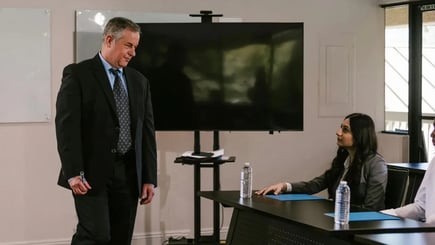Relevant Contents
Need Tailored Business Continuity Insights?
Contact Us Now for Personalized Guidance!
Miniature mock disaster exercises are a small thing that can make a big difference in terms of an organization’s preparedness for emergencies. In today’s post, we’ll lay out the benefits of such micro exercises and discuss how to organize and conduct them.
Related on MHA Consulting: How to Be a Mock Jock: Advice on Facilitating a Disaster Exercise
The typical mock disaster exercise is a complex undertaking that must be planned far in advance and requires a lot of hours from a lot of people. These are the type of exercises I focused on in my two most recent blog posts, one on planning mock disaster exercises and one on facilitating them.
Such full-scale exercises are very important in terms of helping organizations prepare for disasters. However, full-scale exercises are only one of many types of exercises available to organizations that want to improve their ability to deal with disaster.
There is a whole spectrum of exercises companies can use to boost their readiness. Full-scale exercises lie at one end of the spectrum. At the other end of the spectrum are what we at MHA Consulting refer to as micro exercises.
In today’s post, I’m going to take a closer look at micro mock disaster exercises. I’m going to look specifically at:
- What micro mock disaster exercises are.
- How they can benefit your organization.
- The role of the business continuity team in organizing and conducting them.
- Possible disaster scenarios for use in them.
- How to organize and run them.
- How to get management to agree to conduct them.
As the old song says, “Little things mean a lot.” That is definitely true of micro mock disaster exercises in terms of how they can benefit your organization.
WHAT ARE MICRO MOCK DISASTER EXERCISES?
Micro mock disaster exercises are extremely brief disaster exercises that are typically included as agenda items during meetings being held for other reasons. A typical micro exercises lasts about ten minutes. It’s best if they are held fairly frequently.
A micro mock disaster exercise is primarily a thought exercise. As everyone is sitting in the meeting, the facilitator sketches out a scenario for the participants and asks them questions about what they would do in that scenario.
The participants think about what they would do and share their responses.
These discussions are very informal.
The micro mock disaster exercise is a low-stakes way of making people begin thinking about the high-stakes matter of disaster preparedness.
THE BENEFITS OF MICRO MOCK DISASTER EXERCISES
The following are some of the benefits of micro mock disaster exercises:
- They help keep your recovery team personnel sharp.
- They help keep the business continuity process fresh in people’s minds.
- They help your team get better at managing the urgent issues that regularly come up in day-to-day business.
- They help your team get better at handling genuine crisis events.
- They help your team develop its crisis management skills and chops.
- They help you make business continuity part of your organization’s culture.
THE ROLE OF THE BUSINESS CONTINUITY TEAM
What is the role of the BC team in setting up and running an ongoing program of micro mock disaster exercises?
The role of the BC team in this activity is three-fold. First, the BC team obtains management buy-in and gets the program going, including suggesting the schedule and scenarios. Second, team members attend and perhaps facilitate the first exercises. Third, the BC team gradually withdraws to observer status, allowing the various teams to run their exercises themselves.
WHAT ARE SOME POSSIBLE SCENARIOS FOR MICRO EXERCISES?
Many different scenarios are appropriate for mock disaster exercises. The scenario can either be a small situation looked at in its entirety or a small part of a large situation.
The trick is isolating and identifying challenges whose scope is appropriate for a discussion of 10 minutes or so.
Here are some possible scenarios a company might use for micro mock disaster exercises:
- Tell the participants there has been an outage at your organization. Ask them to find and open their business continuity plans.
- One of your major vendors (specify which) has suffered an outage that will keep them offline for five days. Ask your participants what they will do to minimize the impact of the vendor’s outage on your organization.
- You are told you must evacuate your building and that you will not be able to return for a week. Tell the participants they have three minutes before they must be out the door. Ask them what they can do in that time to minimize the impact of the evacuation on the organization.
- One of your key vendors (specify which) unexpectedly goes out of business. What do you do?
- For your Crisis Management Team – there is an active shooting in progress at a remote location. What are the initial risks and actions to take?
HOW TO CONDUCT A MICRO MOCK DISASTER EXERCISE
The following are some tips and ideas for conducting micro mock disaster exercises:
- The typical order of business is: present the scenario, have the team address the immediate tactical needs of the situation, have them look at the longer-term issues associated with their decisions.
- Use a timer to keep people focused.
- Document people’s answers and ideas.
- Good opportunities for holding micro exercises are during weekly staff meetings, departmental leader meetings, and senior leadership events.
- Managers should then hold exercises with their respective teams.
- Micro mock disaster exercises can be either announced ahead of time or a complete surprise. Generally, exercises should be announced with groups that have little experience in disaster exercises.
They can be unannounced for groups with more experience. - Since micro mock disaster exercises are highly informal, there is usually not any sort of written after action report.
- The BC team should seek and share informal feedback as a way of helping all the parties improve in their roles.
- Test the emergency notification portion of your plan on a monthly or quarterly basis. Do this by sending people a message through the system and asking them to reply to you through the system acknowledging receipt.
HOW TO GET MANAGEMENT TO SIGN-ON
In one respect, micro mock disaster exercises are the same as the full-scale kind: Your organization will only be able to conduct them if management agrees.
A benefit of micro exercises is they only take a few minutes and can be slotted into meetings that are already being held for other reasons. This can make management more likely to give the okay.
In terms of persuading management that micro exercises are worthwhile, tell them about the benefits to the organization’s readiness as discussed above.
Mention that conducting micro exercises will help with audit and regulatory matters, if applicable.
A CULTURE OF PREPAREDNESS
Full-scale mock disaster exercises are irreplaceable, but a program of micro exercises can bring great benefits at a minimal cost in disruptions. By keeping such exercises short but conducting them often, you can make disaster preparedness part of the culture at your organization.
FURTHER READING
For more information on this and other hot topics in business continuity and IT/disaster recovery, check out these recent posts from MHA Consulting and BCMMETRICS:
- How to Be a Mock Jock: Advice on Facilitating a Disaster Exercise
- How to Plan a Mock Disaster Exercise
- The 6 Tasks Every Emergency Plan Should Address
- Kill the Zombies, or How to Get More From Your DR Exercises
- Exercise Smarter: Include 3rd Party Experts In Your Cyber Exercises
- Let’s Get Real: The Limitations of Tabletop Recovery Exercises

Richard Long
Richard Long is one of MHA’s practice team leaders for Technology and Disaster Recovery related engagements. He has been responsible for the successful execution of MHA business continuity and disaster recovery engagements in industries such as Energy & Utilities, Government Services, Healthcare, Insurance, Risk Management, Travel & Entertainment, Consumer Products, and Education. Prior to joining MHA, Richard held Senior IT Director positions at PetSmart (NASDAQ: PETM) and Avnet, Inc. (NYSE: AVT) and has been a senior leader across all disciplines of IT. He has successfully led international and domestic disaster recovery, technology assessment, crisis management and risk mitigation engagements.


